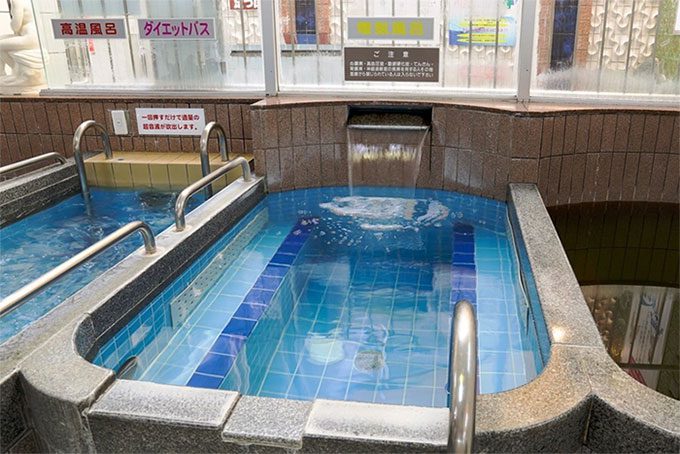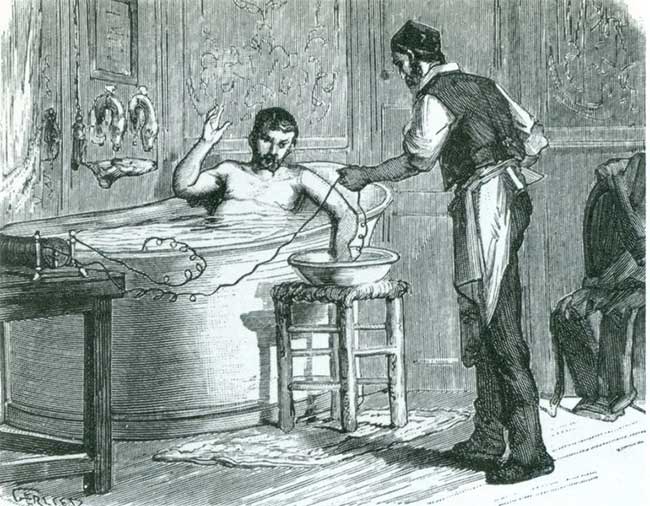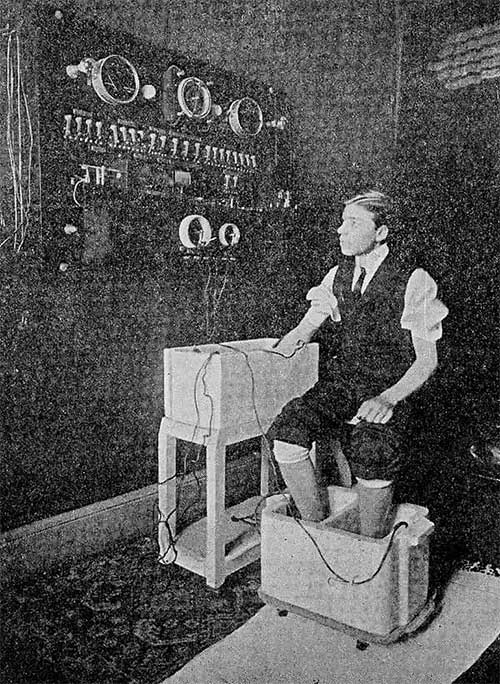Denki buro is a type of bathtub in Japan, characterized by allowing a small electric current to flow through the body as a method of relaxation.
Any general knowledge warns that electricity combined with water (or liquids in general) can be deadly. However, many public baths in Japan are equipped with metal electrodes beneath the bathtub, intended for the electric current to flow directly through the body. Readers should note that this method should not be attempted at home as it can lead to serious consequences.

A basic electric bathtub in Japan. (Photo: hinodeyuosaka).
A Part of Japanese Culture
According to records, the practice of bathing in electric currents began to appear around the mid-1950s, primarily in public baths. This was because, at that time, building a bathroom at home was a luxury that few Japanese could afford.
Essentially, bathers are positioned to lie in a small tub between two opposing electrodes, allowing a weak electric current, with a voltage of less than 2 Volts and a current intensity of less than 1 Ampere, to flow through their bodies. The current causes mild muscle contractions, creating a tingling sensation. While some people feel relaxed, others report experiencing discomfort.
Historians assert that the concept of this special bathtub appeared before 1928, coinciding with the release of the novel “Denkiburo no Kaishi Jiken” (translated: The Case of the Suspicious Death in the Electric Bathtub) by author Juza Unno.

French-style electric bathtub from the late 1870s. (Photo: Tumblr).
Meanwhile, some documents suggest that electrotherapy was first utilized at Middlesex Hospital in London in the 18th century, which laid the groundwork for the Denki buro in Japan.
Although it is unclear when it started, the Denki buro has become a part of public bathing culture and has spread widely throughout the country.
According to Norihide Watanabe, a member of the National Federation of Public Baths, at that time in Japan, there were tens of thousands of public baths. These baths, in addition to their basic function, aimed to provide retirees with what they desired — health care. As a result, Denki buro bathtubs gradually became popular.
Today, public bath owners often install Denki buro as a feature to attract customers, as people now tend to visit public baths more for relaxation than for cleansing.
A Controversial Therapy

A man using hydroelectric bath therapy to treat his arms and feet in 1768. (Photo: Flickr).
While the efficacy of electrotherapy using electric bathtubs has not been convincingly proven, many generations of families in Japan continue to use it as an alternative treatment for back pain, muscle aches, headaches, migraines, arthritis, nervous disorders, and a range of other ailments.
Many believe that the Denki buro can help treat rheumatism and spondylitis. There are also rumors that Denki buro may reduce the sperm count of young men, but no scientific evidence supports this claim.
According to WebMD, a portal providing health information, a small electric current can help alleviate pain. This is because the current, originating from the electrodes in the bathtub, stimulates the nerves in the painful area, contributing to the blockage or disruption of pain signals sent to the brain.
Additionally, when the nerves receive electrical stimulation, the body releases the neurotransmitter endorphin, a hormone that can diminish the perception of pain.





















































